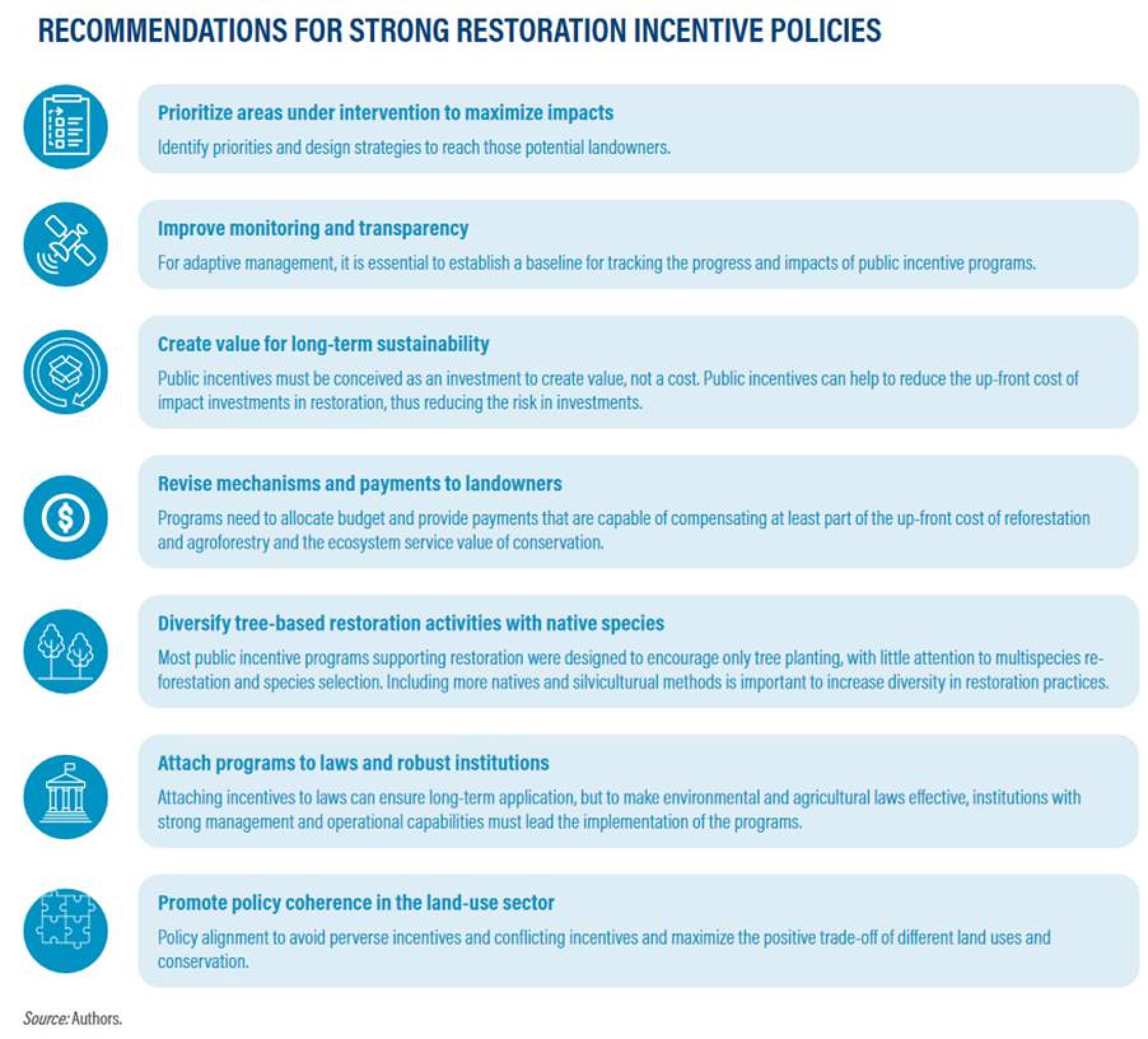Highlights
-
Landscape restoration as a nature-based solution can improve rural livelihoods by increasing food and water security, biodiversity, and soil quality and developing sustainable value chains.
-
The effective implementation of landscape restoration on degraded lands requires public incentives to support reforestation, assisted and natural regeneration, agroforestry, silvopasture, and lowcarbon agriculture actions and to leverage private sector resources.
-
Public incentives are needed in restoration to influence the allocation of land to sustainable land uses, implement best practices, and capitalize on the value of many ecosystem services.
-
Government incentives in landscape restoration oriented as an investment, not as a cost, can accelerate the implementation of actions to achieve nationally determined contribution targets in the agriculture, forestry, and other land use (AFOLU) sector in Latin America.
-
Policy innovation and public entrepreneurship are essential to accelerate solutions to policy bottlenecks around public incentives.
Findings
-
Five incentive programs available in Chile, Colombia, Costa Rica, Guatemala, and Mexico currently provide direct payments to landowners, and some provide payments to landholders (with no legal land title and no conflict or dispute on the land with other people), to restore their lands by planting trees.
-
In coordination with local stakeholders, governments need to improve the monitoring and transparency of the performance and impacts of incentive programs.
-
In coordination with impact investors, governments need to promote value chains from prioritized restoration activities.
-
Ministries of environment, agriculture, and finance need to revise the available resources for public incentives in restoration along with other policies in agriculture and other related sectors.
-
Public institutions in charge of public incentive programs need to promote diversification of restoration activities supported with public incentives to increase biodiversity in the target landscapes.
-
Policymakers and lawmakers should attach new programs to laws and robust institutions and budgets to ensure program adoption and long-term sustainability.

| Year of publication | |
| Publisher | World Resources Institute |
| Geographic coverage | PeruMexicoChileCosta RicaColombiaGuatemala |
| Originally published | 04 Apr 2022 |
| Knowledge service | Metadata | Global Food and Nutrition Security | AgroecologySustainable Food Systems | AgroforestryPublic investment |
| Digital Europa Thesaurus (DET) | sustainable agriculturebiodiversityAid to agriculturepolicymakingenvironmental protectionecosystem services |
